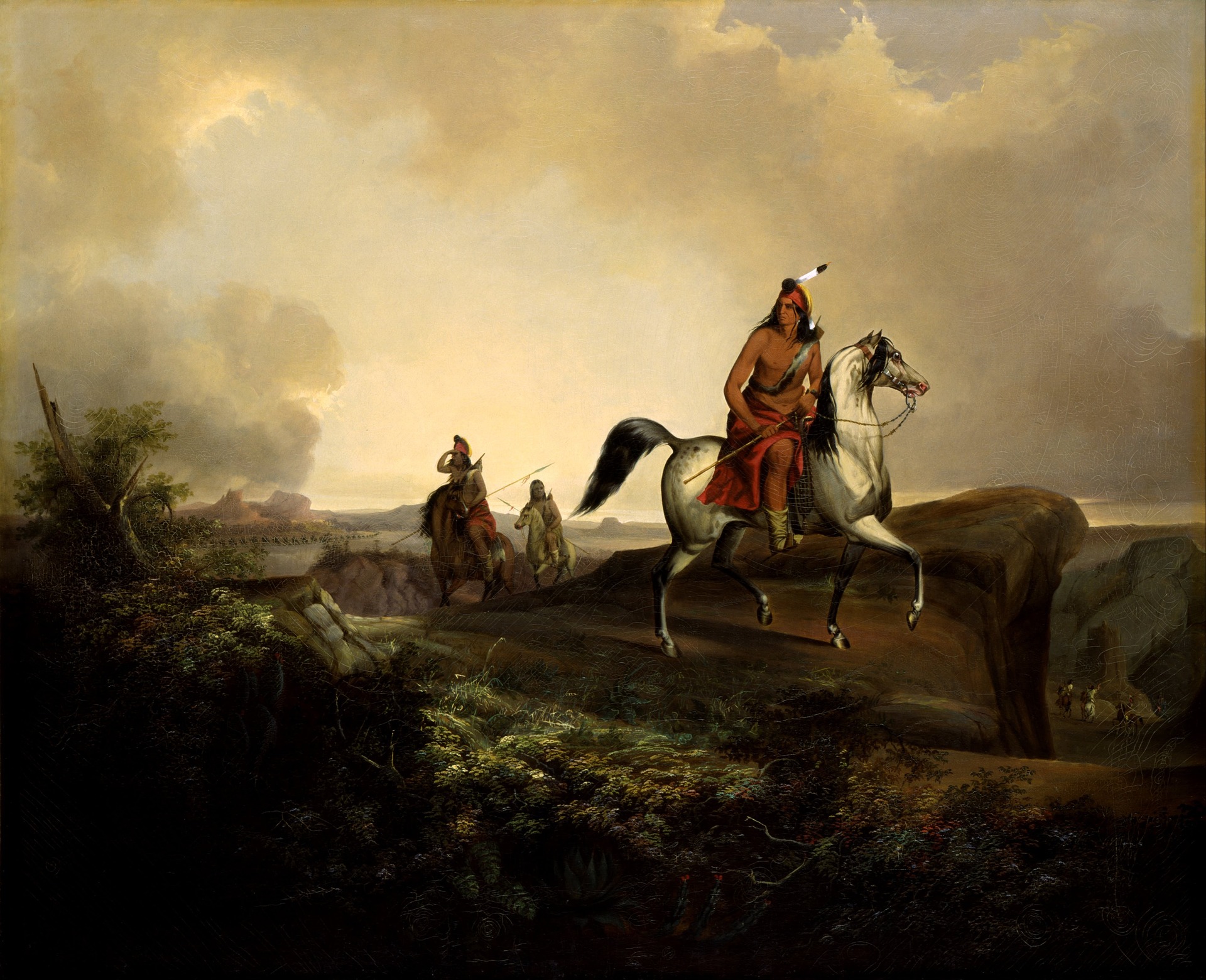November’s Native American Heritage Month began at the turn of the 20th Century as a day of recognition for the contributions of Native Americans to the growth and establishment of the United States. In the early 1900’s, Dr. Arthur C. Parker, a Seneca Indian, persuaded the Boy Scouts of America to set aside a “First Americans’ Day”, which they did for three years. On September 28, 1915, the Congress of the American Indian Association and its president, Rev. Sherman Coolidge, an Arapahoe, declared the second Saturday of May as American Indian Day. It was the first formal appeal for recognition of Native Americans as citizens.
Red Fox James, a Blackfoot Indian, rode 4,000 miles from state to state on horseback collecting the endorsements of 24 state governments to honor Native Americans. On December 14, 1915, James presented them to President Woodrow Wilson, but no National Day of Recognition was proclaimed.
In 1916, New York was the first state to recognize such a day when Governor Charles Whitman declared the second Saturday in May as American Indian Day. The Illinois legislature enacted a day of recognition in 1919.
President George H. W. Bush approved a joint resolution of Congress in 1990 which designated November as “National American Indian Heritage Month.” Similar proclamations in many states have been issued each year since 1994. In addition, some States and localities, including Montgomery County, have recognized what is generally known as Columbus Day, in October, as Indigenous Peoples’ Day.
So, who were the original people who settled in our own area? We know from some of our previous lecturers, including Jon Wolz and Ken Sholes, that the Piscataway Conoy Indian Tribe were indigenous to our area. However, it appears that Montgomery County was a crossroads for many native peoples. From the north came the Iroquoian-speaking Senecas and Susquehannocks, and from the east and west came the Algonkian speakers, the Piscataway and the Shawnee (Souian). These native peoples carved out hunting trails and transportation routes through the County. Some of the routes follow what we know today as Route 355.
In Montgomery County, the earliest native sites are believed to be late Pleistocene Paleoindians, dating back more than 12,000 years. The Native American lands in our area of the Potomac River valley were called Cohongorooto, “land above the falls”. The climate at the time was colder and the area was forested with conifers. The Paleoindians lived in small bands, moving seasonally to hunt bison and mammoths, as well as giant beavers. Using stone tools, they fashioned poles tipped with fluted points – flaked stone. Relics have been recovered near the McKee-Beshers Wildlife Management Area and near Tuscarora Creek.
About 9,000 years ago, as the climate began to warm, plants and animals more like today’s species began to flourish along the Potomac River. Evidence of human habitation, dating to the Archaic Period, is found along the Potomac, buried many feet in the soil, and on upland areas. Potomac River cobbles were used to make stone tools during this period and evidence of tools has been found along the C&O Canal near White’s Ferry, the Dickerson Conservation Facility, and Point of Rocks.
Life became less seasonal and more sedentary 3500 years ago. Seed collecting began and pottery fragments have been found dating back to this period, indicating the beginning of agriculture.
By 1000 A.D., Native Americans in our area had developed a way of life that included concentrated settlements and villages. In addition to hunting, fishing, and gathering, archaeologists have found evidence of maize and agricultural activity. Evidence of these villages has been found at Point of Rocks, Noland’s Ferry area, Mason and Seldon Islands, and near McKee-Beshers.
The first permanent indigenous settlement to be documented in the State of Maryland was the Walker Prehistoric Village, located in the Potomac River flood plain, north of Seneca Creek. This village was inhabited during the Late Woodland Period, 1200-1500 A.D. It is believed to have been enclosed by a wall or palisade, with the dwellings circling a central plaza. Flood plain agriculture was widely practiced, and the site is unique for its large and variable ceramic samples recovered by researchers. The people inhabiting this village are believed to have been Algonkian speakers.
When the first Europeans arrived in the area, they found people with a rich culture inhabiting these lands in well-established settlements. The Piscataway Conoy Indians lived on a large island in the Potomac River, Conoy (Heaters) Island. They planted corn, squash, tobacco, and beans in the fertile soil. They also constructed the fishing weirs that can still be seen on the Potomac River near White’s Ford. Their settlement was palisaded. In 1699, visitors counted 150 inhabitants of this village. By 1772, the numbers had dwindled to 50 persons. Eventually, through treaties and westward expansion, the indigenous peoples of our area moved, for a time, north to Pennsylvania or south to the Carolinas. Many Piscataway Conoy tribe members returned to Maryland. They are an officially recognized tribe in Maryland. Most of their descendants live in Prince George’s County and Southern Maryland.
As you enjoy a stroll along the C&O canal or walk through the McKee-Beshers Wildlife Area, take a moment to imagine that area as it was 12,000 years ago. Look for traces of the past. Pay homage to the indigenous peoples who helped the early settlers in our region become established, which, sadly, led to their own demise. Honor their history and contribution to our country.

